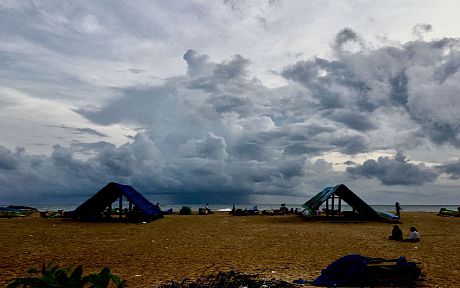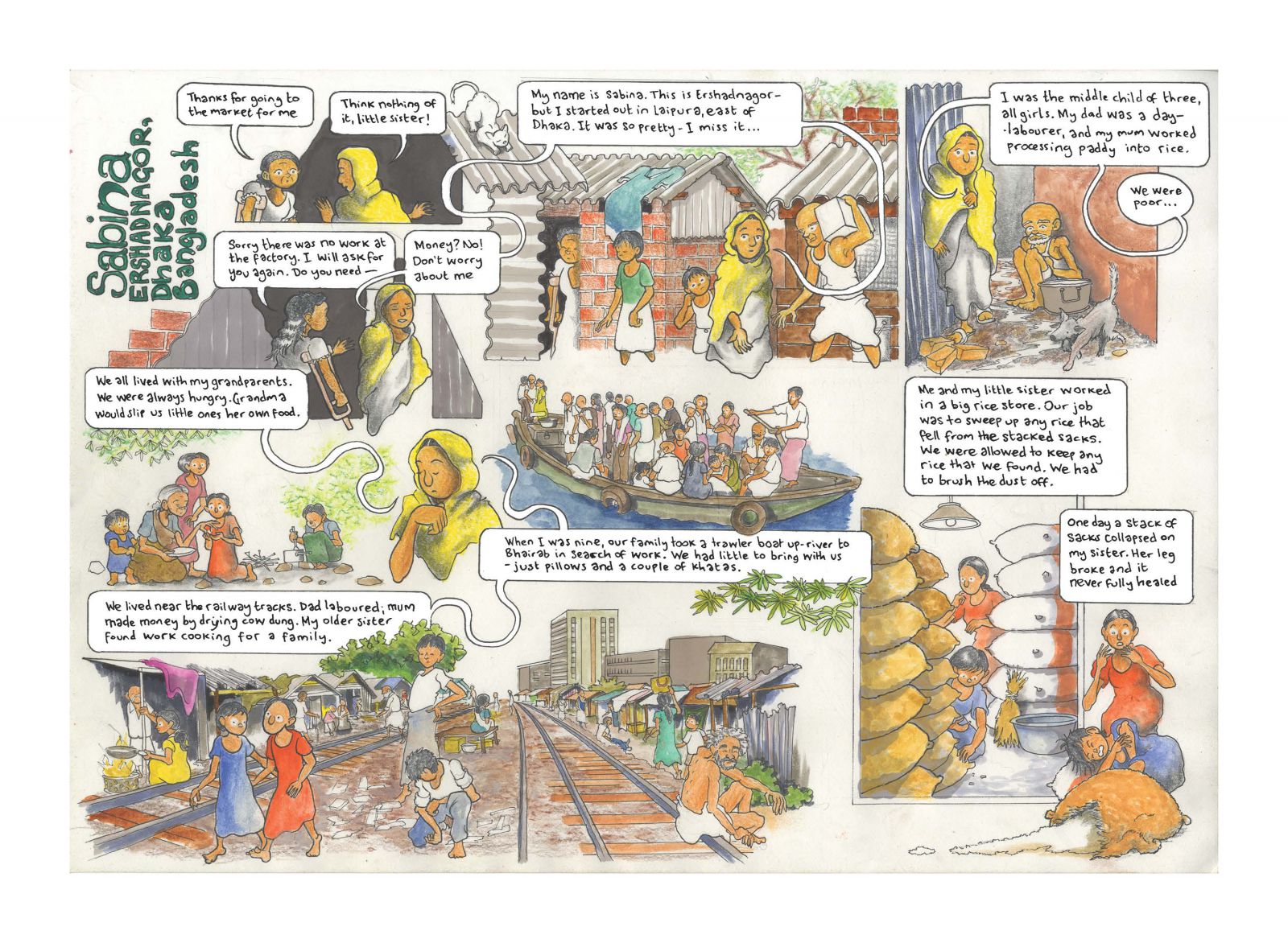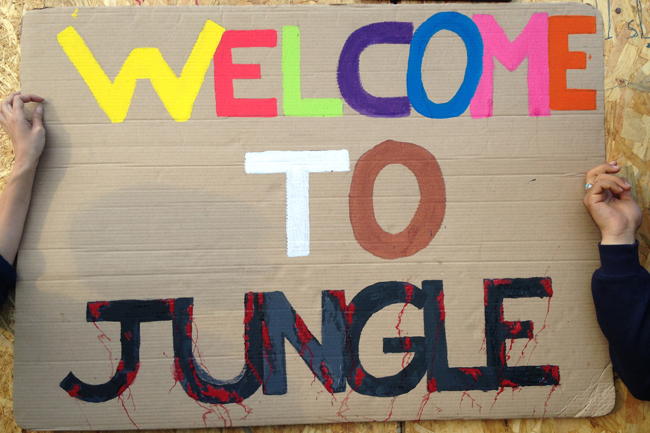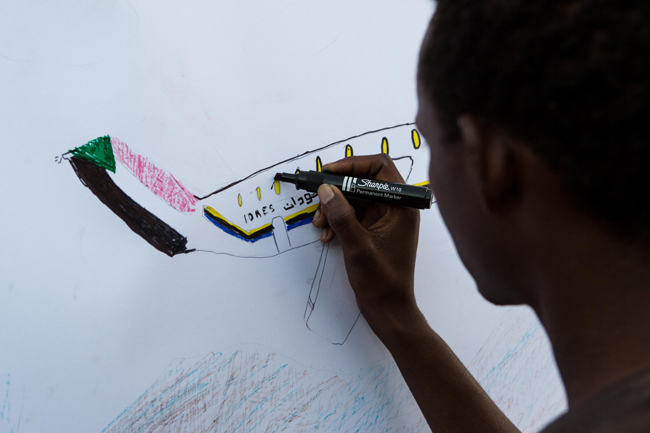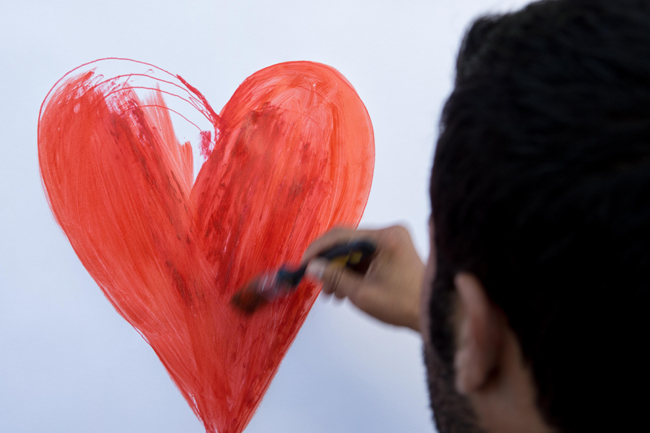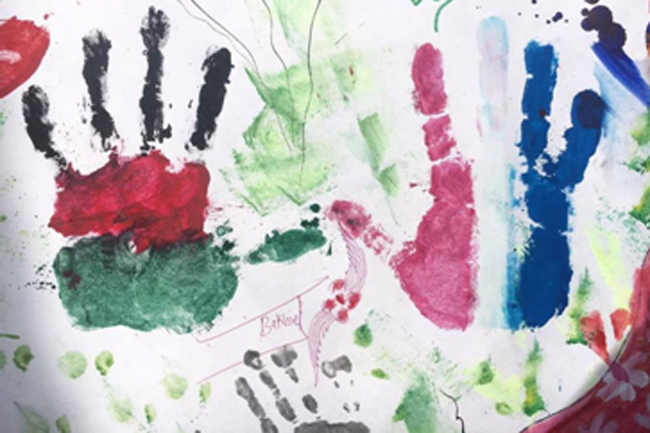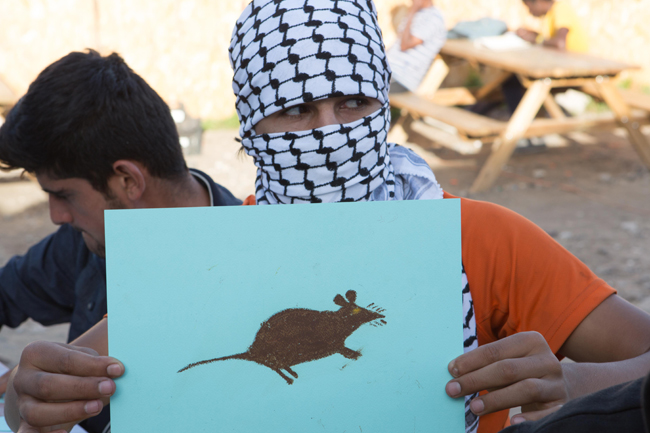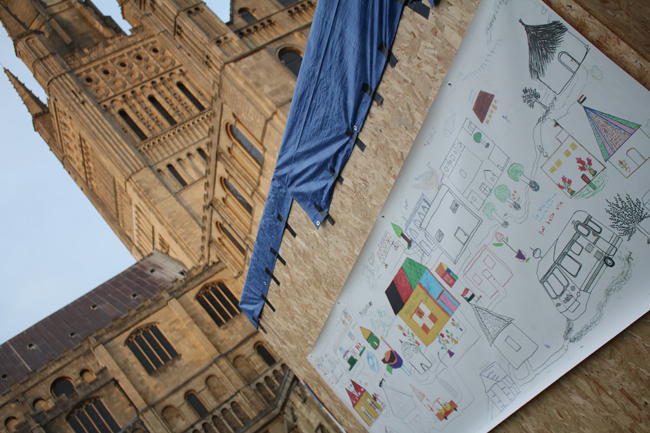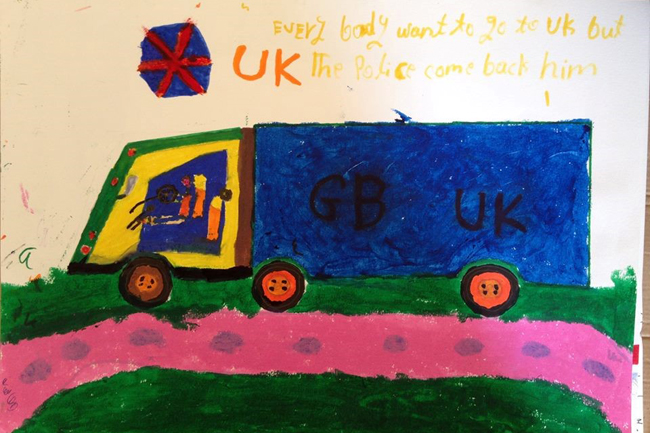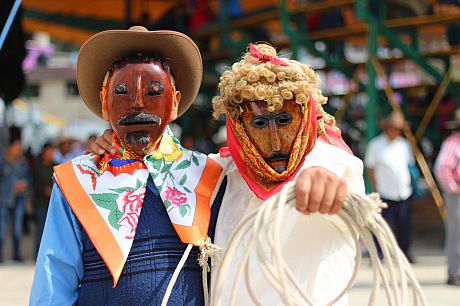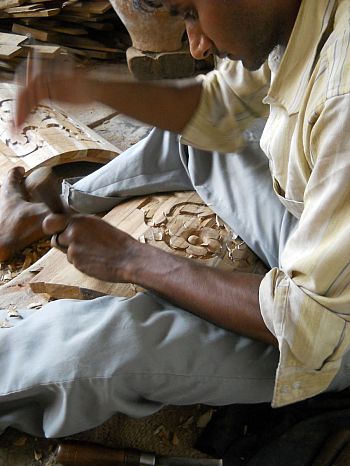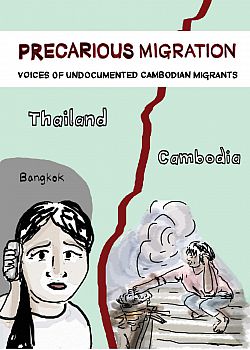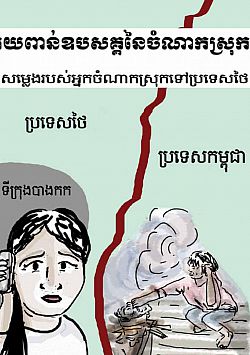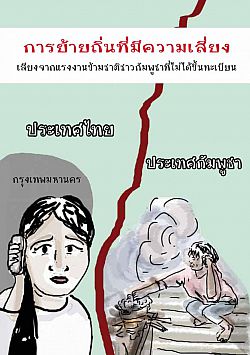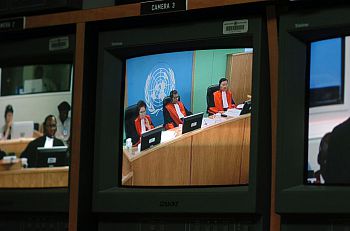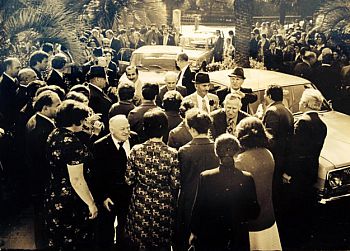Dhaba displays began in 2010. They are curated, produced and installed several times a year by students and staff in the School of Global Studies to showcase the diverse research, teaching and learning interests and expertise of our community.
Get in touch if you’d like to create a display for the Dhaba
Past displays
2020
Forecasting with fishers
Dr Max Martin
Research Fellow, Department of Anthropology
These photos were taken during the fieldwork for Forecasting with Fishers, an ongoing research project of Sussex researchers. The research aims at making marine weather forecasts more accurate, accessible and actionable for artisanal fishers in south India. Along with local forecasters, research institutions and fishing communities in Thiruvananthapuram and Kanyakumari districts, we have studied how difficult and risky it is to fish during the monsoon months, when the wind and waves are high. We looked at how fishers make decisions to go to fish with limited information amidst uncertainties. Along with the fishers and forecasters, we have co-produced forecasts bulletins and made them available online and over mobile phones through a free service called Radio Monsoon.
The project development was supported by Sussex Innovation and various small grants from the University. Sussex Sustainability Research Programme (SSRP) funded our pilot project during 2018-19 and a Royal Geographical Society grant allowed us to continue work during the monsoon season of 2019. The Sussex team led by Prof Filippo Osella (anthropology) comprised Kate Howland (informatics), Pedram Rowhani (geography), Prof Roderick Stirrat (emeritus professor of anthropology), who advised us, and Max Martin (geography), who took these photos. We now continue our research with a UKRI-GCRF fund for 2019-2021 with a larger team and more local and international support. India Meteorological Department, Indian National Centre for Ocean Information Services, Cochin University of Science and Technology and the Royal National Lifeboat Institution are some of our key partners.
2019
Khmer People’s National Liberation Front
Trumphan Maneetapho is a retired photojournalist who covered periods of political instability and conflict in Thailand, Myanmar and Cambodia between 1985 and 1989. Born in Thailand, Maneetapho used his knowledge of the local physical and human geography to gain exclusive access to political actors at the highest and lowest levels.
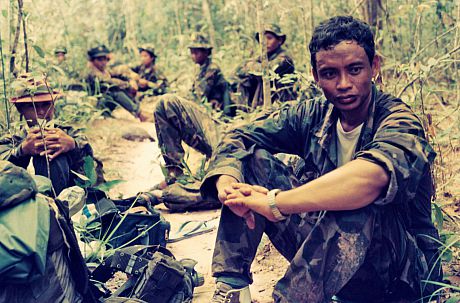
The photos in this exhibition were taken in Western Cambodia during the later years of the Vietnamese occupation. During this period, a tenuous alliance between the Western-backed Khmer People’s National Liberation Front (KPNLF), the Khmer Rouge and numerous other small resistance movements waged a bloody insurgency against the Vietnamese-backed People's Republic of Kampuchea. The diverse mix of small arms and uniforms is indicative of both US and Chinese influence in the region and an alliance of necessity between previously warring factions.
Maneetapho gained the trust of the KPNLF soldiers by living with them during their operations. The resulting images provide a snapshot of the human experience of conflict that isn’t captured by media headlines and the conventional political narrative. Through viewing the expressions on their faces, the clothes they wear and the objects they are carrying, the observer can construct a picture of history larger than the photograph itself.
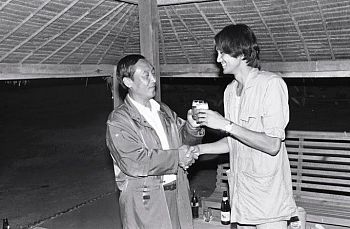 After retiring from journalism and moving to the UK in 1991, Maneetapho now lives in Brighton.
After retiring from journalism and moving to the UK in 1991, Maneetapho now lives in Brighton.
Maneetapho (right) during a rare interview with Khun Sa, Myanmar drug trafficker and militant separatist. This interview required Maneetapho to smuggle himself across the border and make a 17 hour trek through the jungle before being blindfolded by militants who took him to a secret location.
Display curated by Daniel Holmes,
MA Conflict, Security & Development student
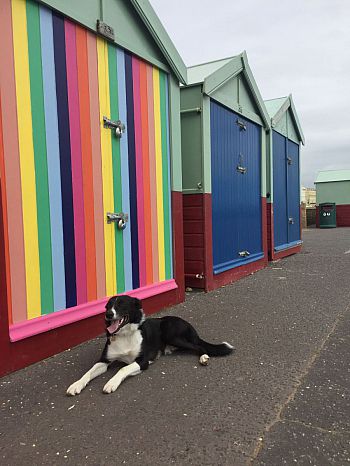
Ethnographic fieldwork in Brighton
From its origin as a discipline and mode of enquiry, anthropology has distinguished itself for its long-term fieldwork, and commitment to visiting and revisiting a community/fieldsite to produce ethnographic knowledge.
At the School of Global Studies, the Department of Anthropology trains and encourages undergraduate and postgraduate students to embark on anthropological field research. This photo-exhibition contains the year-long work of two students, Yuvinka and Amber, who took the module Anthropology Thesis (year 3); and the shorter project of Madeleine and Ciara for the module Ethnographic Field Research (year 2).
These students’ research examined a farmers market; agro-ecological practices (permaculture); a dog walking society, and a city garden and wildlife project. Because of its proximity to the university campus, Brighton offered a suitable location for anthropological fieldwork.
Diana Ibañez-Tirado, who teaches these modules, curated the exhibition.
2018
Migrants on the margins
Migrants on the Margins, a three-year field research project led by the Royal Geographical Society (with IBG) is attempting to improve our understanding of the experiences of migrants and their access to urban opportunities.
By 2050, 5.2 billion people are expected to live in urban areas in Africa and Asia, almost double that of today. The movements of migrants, typically into informal settlements on the margins of rapidly growing cities, are some of the most important and least studied migration patterns worldwide.
It is not clear what impacts migrants have on the places they move too, nor is it clear how cities should respond. Very little is understood about the life chances of the migrants themselves and the issue will only worsen as populations grow and the impact of climate change is increasingly felt.
Following the successful October 2016 kick-off meeting of Migrants on the Margins, in partnership with a consortium of UK universities and international partners, field research was undertaken in four study cities: Colombo (Sri Lanka), Dhaka (Bangladesh), Harare (Zimbabwe) and Hargeisa (Somaliland). Each city faces rapid urban development and significant ongoing migration from nearby rural areas.
The comics on display tell the stories of an individual migrant from each of the four cities. Produced by PositiveNegatives, the comics highlight the challenges that migrants living on the margins of these urban areas face in their day to day lives including forced evictions, poverty and lack of land security.
The project team was coordinated by Mike Collyer from the department of Geography at Sussex and included Sussex faculty JoAnn McGregor and Dominic Kniveton
Further deatils: https://www.rgs.org/all/?categories=MigrantsOnTheMargins
 Come out for trans equality
Come out for trans equality
This display celebrates the achievements of trans people across the globe, while recognising the work still required to make transphobia a thing of the past.
Stonewall is proud to work with lots of inspirational trans people. Sharing their stories helps to challenge prejudice and assumptions so that all trans people can be accepted without exception.
Visit www.stonewall.org.uk for more information and resources.
The Big Steppe
The Big Steppe team are a group of researchers, documentarians and artists who have recently returned from an expedition to Mongolia where we were researching experiences of rural to urban migration.
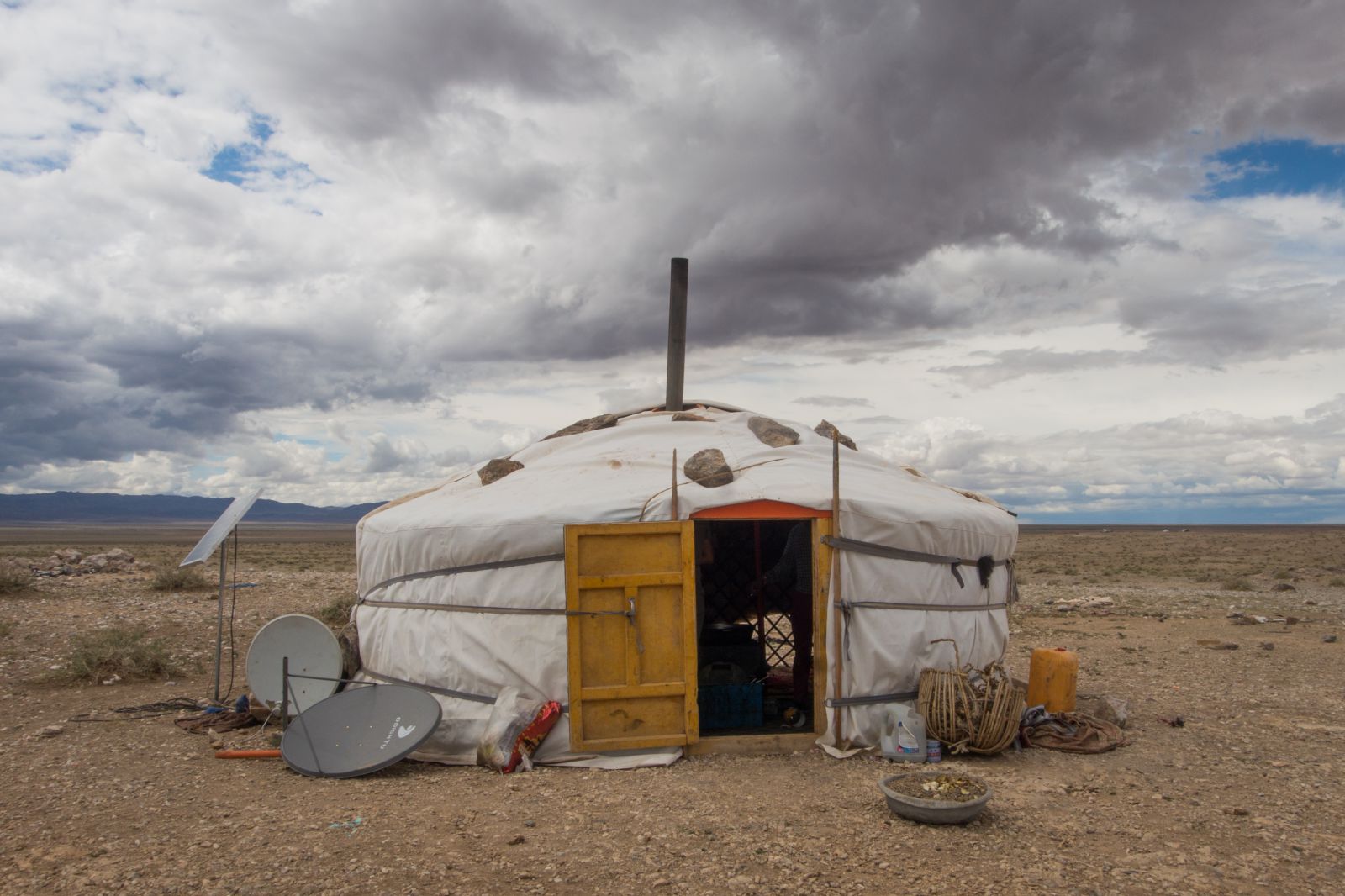
In Mongolia, many people have been making the decision to migrate; from a nomadic life in the countryside to peri-urban areas or larger towns, and from these towns to the city. The decision to make this move cannot be reduced to a single cause, as there are many ‘push’ and ‘pull’ factors that influence the choice to move. For some people, the decision to migrate stems from the desire for a better education, or to be closer to more advanced medical facilities or hospitals. For others, the drive to have access to more opportunities for waged labour is the pull that influenced them to migrate. For most, it is a combination of factors that result in their migration. However, climate change has now become a major factor for households living on the Mongolian steppe. Over the past seventy years, the average temperature in Mongolia has risen by 2.07 degrees. This is more than double the average global increase over the past century. Climate change is affecting people’s capacity to cope or maintain their wellbeing, especially when it interacts with other ‘push’ forces, which may include poor health, insufficient market prices for livestock goods, or conflict over land and resources.
To better understand the experiences of those who have already migrated to urban areas, our research also focused on one of the most notable destinations for people who migrate from rural to urban spaces; Ulaanbaatar (UB), Mongolia’s capital city. Around 47 percent of the country’s three million inhabitants live here, and 60 percent of these people live in the ‘Ger areas’. Ger areas are districts of largely informal settlements and dwellings distributed around the northern periphery of the city. Comprised mostly of traditional Gers (the Mongolian name for Yurt), these are continually expanding areas as more people make the decision to migrate to the country’s capital. The fact that the government recently issued a moratorium on new migrants registering in the city is testament to the challenges that human migration is presenting at a governmental level.
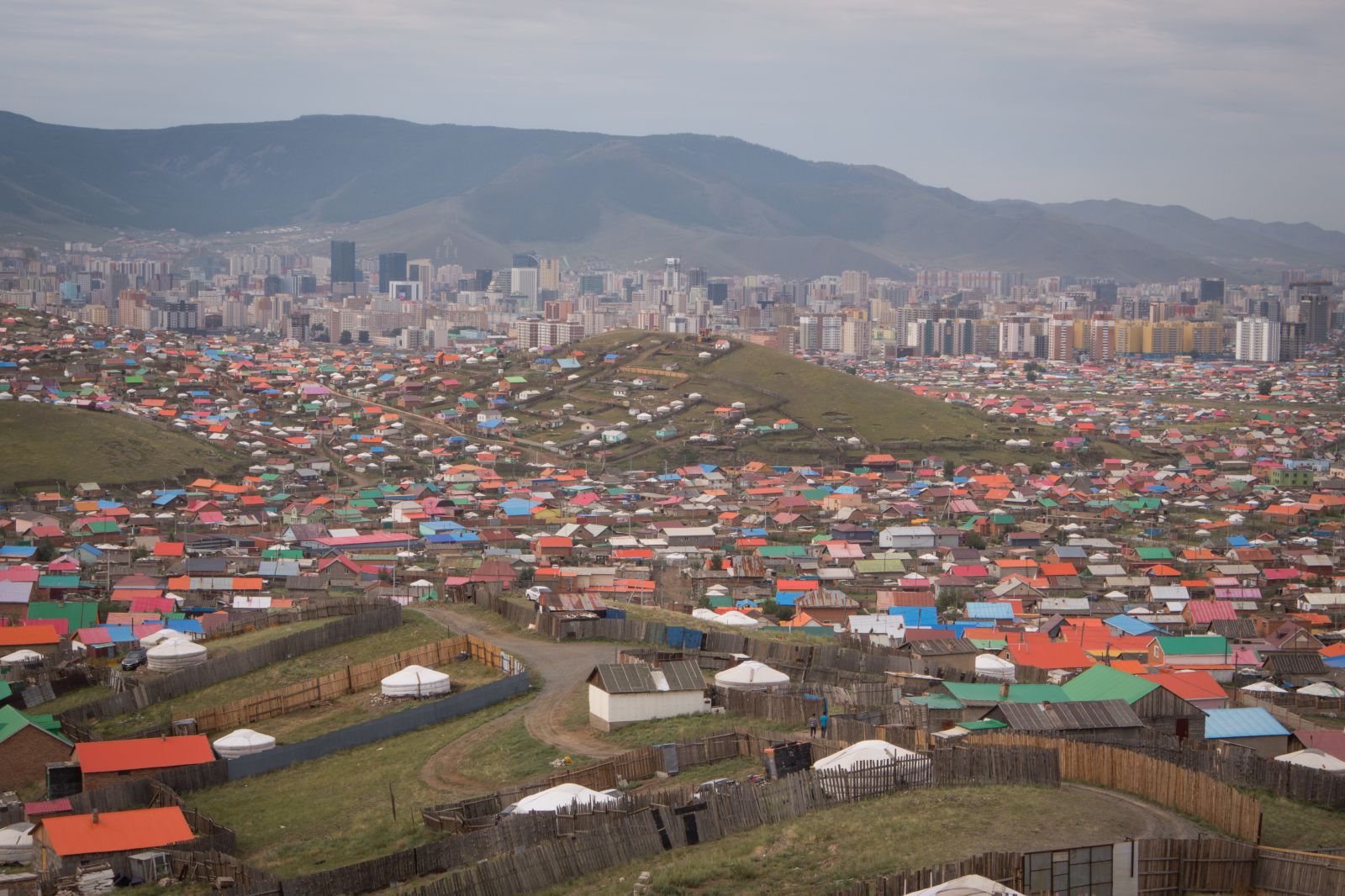
It became evident to us that although many people who live in these districts migrated in search of better healthcare, education, or job opportunities, such advancements in their wellbeing have not materialised. Many of the residents in ger areas remain unregistered in the city, and as a result do not have the right papers to access healthcare or education. Well-paid jobs require skills that many people do not possess. Public facilities are overrun, and access to the available facilities are frequently determined by relative wealth and power.
With a lack of state support for existing ger area residents, attempts to prevent people from migrating to UB through the government’s moratorium on new applications for citizenship may appear like a sensible decision. But with little assistance available for Mongolia’s rural communities, there are limited options left for a population wrestling with ‘modernity’ and a shifting climate. Political and social change has left many Mongolians less able to deal with such dramatic shifts, and so internal migration may not be the preferred step to take but may just be a means of adaptation that they have little choice but to take.
The Big Steppe Team: Molly Atkins (MA Environment, Development and Policy student, Anoushka Carter, Hattie Field, Sean Lovell and Bob Walley. Additional photo credit: Matthew Emslie-Smith
We would like to thank our funders the Royal Geographical Society, The Jeremy Willson Charitable Trust, and The Frederick Soddy Trust, and Expedition Base Camp.
2017
Protestimony
Hari Reed, Sussex alumna
Protestimony is on display in the Dhaba, the Resource Centre (Arts C175) and in the ground floor corridor of Arts C.
Protestimony is an exhibition that aims to communicate an alternative narrative about the “refugee crisis” to a diverse audience in the UK and France. Protestimony challenges the dehumanising and depoliticising anti-refugee and migrant rhetoric of mainstream media using artworks created by refugees and volunteers who lived in the Calais Jungle.
This artwork was made during workshops run by IMAGINE – a London-based, not-for-profit organisation – in the Calais camp in the summer of 2016. Protestimony is the fulfilment of IMAGINE’s commitment to use the artwork created in these workshops as a form of protest, advocacy and awareness-raising.
Protestimony is a platform for refugees to communicate their views – personal and political, controversial and banal – to their host communities. The form and ethic of the exhibition has been developed in conjunction with former ‘Jungle’ residents from various backgrounds. This means that the focus of Protestimony is not on what refugees experienced in Calais, but how refugees choose to interpret and communicate what they experienced in Calais.
Protestimony is also a reflection on the information we receive in the UK about refugees, the names and terms used to describe refugees, and the specific exclusionary narrative this promotes. It reminds us that the refugees who formerly lived in the Jungle have not disappeared, but are stuck in limbo throughout France or sleeping rough in Calais.
More information about IMAGINE can be found at www.assoimagine.com.
2018 calendars featuring these artworks can be purchased in the Global Studies Office C168; all proceeds support the charity.
Community life for the Ayuujk Ja’ay, Oaxaca, Mexico
Carmen Leon Himmelstein
Between October 2013 and September 2014, I lived with the Ayuujk ja'ay, or Mixes, in the north east mountains of the south of Oaxaca, Mexico, as part of my doctoral fieldwork looking at the links between social protection and migration.
One of the towns that I visited was Tamazulapam del Espiritu Santo (Tama) located 2,040 metres above sea level. There I met the photographer Conrado Pérez Rosas, himself from Tama, and his pictures here give some idea of the magic of this place.
The Mixes, despite the more than 500 years of colonial domination, have been able to preserve a socio-cultural and political life of their own. Today, Tama is known in the Mixe region by the migration of its inhabitants to the USA and to other parts within Mexico where Tama people have set up taquerias (taco restaurants). Like other indigenous groups, they seek to document and show their life and thought through the help of technological tools such as photography with the aim to strengthen and revive their community identity.
This photographic exhibition seeks to show the importance that Tama and its people give to the continuation of their culture. This exhibition is also organised to raise funds for the reconstruction of Mexican communities following the September, 2017 earthquakes.
Further information of the ‘Rise Mexico’ campaign:
https://www.justgiving.com/crowdfunding/helpearthquakemexico
About the photographer
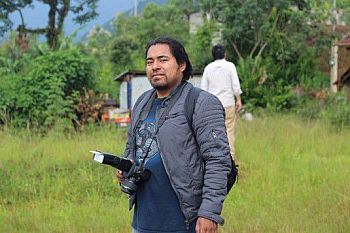 Conrado Pérez Rosas was born on December 10, 1986, in the community of Tamazulapam del Espirito Santo Mixe, which is located in the northeast mountains of the state of Oaxaca. He is a son of peasants, Don Matías Pérez Rosas and Pascuala Rosas Manuela.
Conrado Pérez Rosas was born on December 10, 1986, in the community of Tamazulapam del Espirito Santo Mixe, which is located in the northeast mountains of the state of Oaxaca. He is a son of peasants, Don Matías Pérez Rosas and Pascuala Rosas Manuela.
His childhood was spent between the working in countryside and community life, which allowed him to live intimately with nature. From childhood he felt the need to contribute to his community but without even knowing how or when this would happen. He lived his childhood like any other child of the community between games and the work in the fields.
During his childhood he had his first experience with photography with the visit of a photographer to the community, which gave him a fascination for images. He concluded his basic studies in his community, and later moved to Mexico City where he took his first photography course at the National School of Photography (ENAF) and where he had his first collective exhibition. After having spent some years in Mexico City, economic problems meant that he decided to return to his community where he began to show his first works.
Connecting the Margin: Work, Life & Migration in an Indian Craft Industry
This photo exhibition focuses on everyday life in a Muslim woodworking industry in the North-Indian city of Saharanpur. The ethnographic research, among primarily male craftworkers, was conducted over 1 ½ years and involved participating in everyday life, learning woodwork, living and migrating with craftspeople. Muslims are particularly present in craft industries within the region, including textiles and embroidery, brass and ironworking, woodcarving and furniture making. Many contemporary representations of these communities focus on decline, marginalisation or backwardness. The exhibition challenges these narratives by attending to the skills, connections and networks that constitute everyday life. Connections that are carved out in the context of craftworking histories, sociality, supply chains, religious identity, migration and mobility.
This connectedness plays out in complex ways. Being embedded in global supply chains means that everyday forms of sociality constantly intersect with production and labour relations. Connections centred on religious identity create a sense of community that bridges ‘local’ and ‘national’ to produce forms of cosmopolitanism and a sense of wider belonging. Craftworkers have forged complex networks of migration that stretch to every corner of India and, increasingly, to the Middle East.
However, this is not a celebratory account of connectedness. Networks that may be enthused as productive of cosmopolitanism or transformative social imaginaries, also embody dualities which enable global chains of supply to maintain production through socially embedded networks. Likewise, migration may involve the crossing of boundaries, yet is not necessarily just about change, rupture, social transformation or an altered imaginary. Rather, it is also constituted through continuity at the material, personal and emotive level. Continuities provide comfort and familiarity but also enable the imaginations of migrants to be subverted, co-opted, influenced and structured to meet the demands of labour markets both domestically and abroad.
Tom Chambers
Re:development
Voices, Cyanotypes & Writings from The Green Backyard
Jessie Brennan
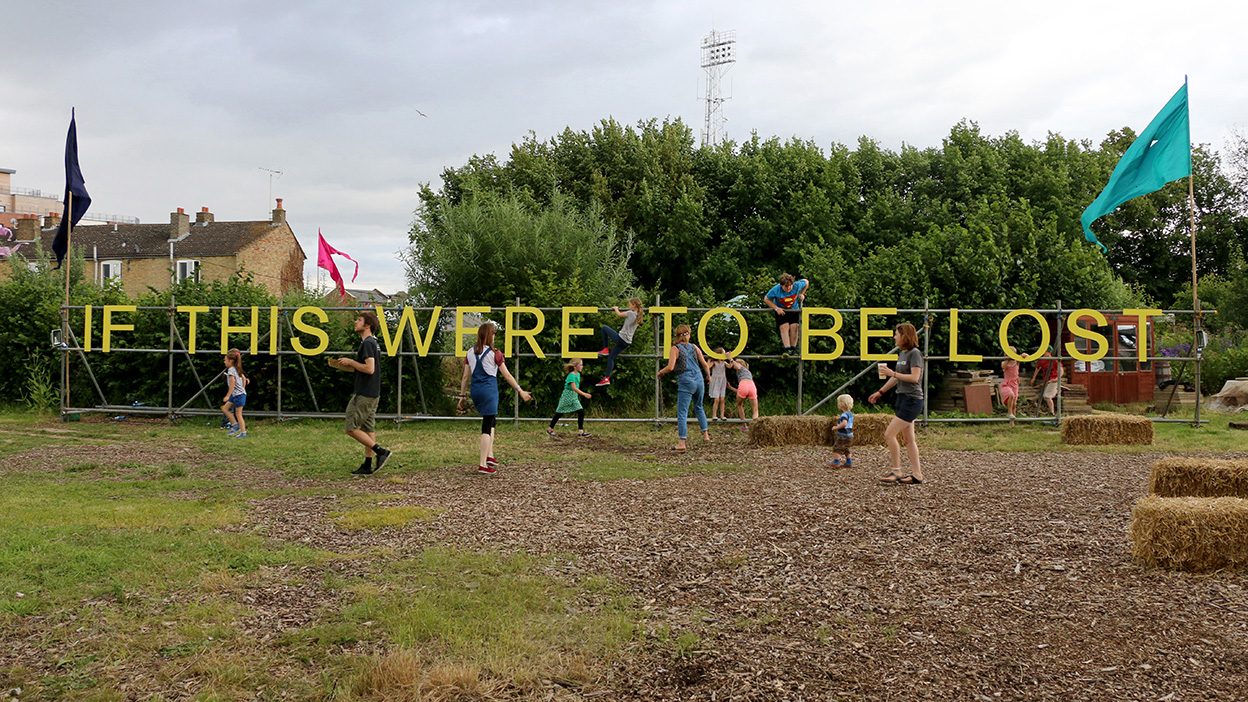 Jessie Brennan If This Were to Be Lost, 2016, painted birch plywood on scaffold, situated at The Green Backyard, Peterborough.
Jessie Brennan If This Were to Be Lost, 2016, painted birch plywood on scaffold, situated at The Green Backyard, Peterborough.
A derelict site in Peterborough’s city centre was transformed into a vibrant community growing project by volunteers, yet for years was under threat of redevelopment. While that threat was ongoing, the voices that resist it were stronger still: on 27 January 2017, after a lengthy – but successful – community resistance to a proposed development, the land is finally safeguarded. Artist Jessie Brennan shares the voices of The Green Backyard – of those defending their right to the city.
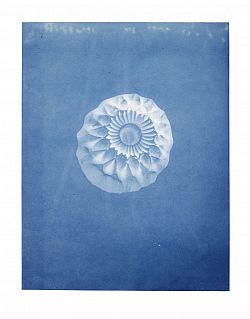 Jessie Brennan 'Ashtray', cyanotype, from Inside The Green Backyard (Opportunity Area), 2015-16.
Jessie Brennan 'Ashtray', cyanotype, from Inside The Green Backyard (Opportunity Area), 2015-16.
Re:development is an outcome in the form of a book (selected pages of which are displayed here for the Dhaba) of a collaboration between Jessie and the people who use and care for The Green Backyard. During Jessie’s time in residence in Peterborough, they questioned the capitalist logic of the site’s proposed development by its owner, the City Council. Instead they offered alternative evidence for the current social use and value of the land, in the form of a visual and audio archive of more than 100 cyanotypes (camera-less photographs) and over 100 oral recordings (voices of The Green Backyard), plus a large-scale installation in the garden. The process raised many questions about what this community – and many other volunteer-run projects – stand to lose if the land were to be lost to development.
The Green Backyard is situated on a 2.3-acre strip of public land in Peterborough, co-founded in 2009 by University of Sussex Geography graduate Sophie Antonelli and her father Renny.
Jessie Brennan is a London-based artist and author of the new book Re:development, about The Green Backyard in Peterborough. Her year-long residency with arts organisation Metal, in collaboration with The Green Backyard, is supported by Arts Council England, Seedbed Trust, Peterborough Presents, and the Bartlett, UCL (through the artist’s Bartlett Visiting Research Fellowship, 2016).
Contributing authors include: Sophie Antonelli (activist; co-founder of The Green Backyard); Dr. Alexandre Apsan Frediani (researcher of development practice; Lecturer at the Bartlett Development Planning Unit, UCL); Dr. Robert Biel (carpenter-historian; Senior Lecturer at the Bartlett Development Planning Unit, UCL); Dougald Hine (social artist, writer and thinker; co-founder of Dark Mountain); Prof. Jane Holder (Professor of Environmental Law, UCL); Anna Minton (writer; Co-Director of UEL’s MRes course, Reading the Neoliberal City); Dr. Barbara Penner (architectural historian; Senior Lecturer at the Bartlett School of Architecture, UCL); Prof. Jane Rendell (artist-writer; Professor of Architecture and Art, and Director of History and Theory at the Bartlett School of Architecture); Prof. Ben Rogaly (geographer; Professor of Geography, University of Sussex); and Dr. Maria Walsh (writer and art critic; Reader in Artists’ Moving Image at Chelsea College of Arts, University of the Arts London).
Copies of the book are available to read in the Dhaba café for the duration of the exhibition. The book may also be ordered online or from several London bookshops: Jessie Brennan, Re:development: Voices, Cyanotypes & Writings from The Green Backyard (London: Silent Grid, 2016).
Read the chapter by Sussex Geographer Ben Rogaly
Listen to the oral recordings – part of the artwork Inside The Green Backyard (Opportunity Area), 2015–16, which was exhibited in RESIDENT at Peterborough City Gallery & Museum (22 July – 28 August 2016).
Editions of cyanotypes are available from dalla Rosa Gallery.
Further information about the project can be found here: Saving Peterborough’s Green Backyard: 'It's a point of stillness in a crazy world'
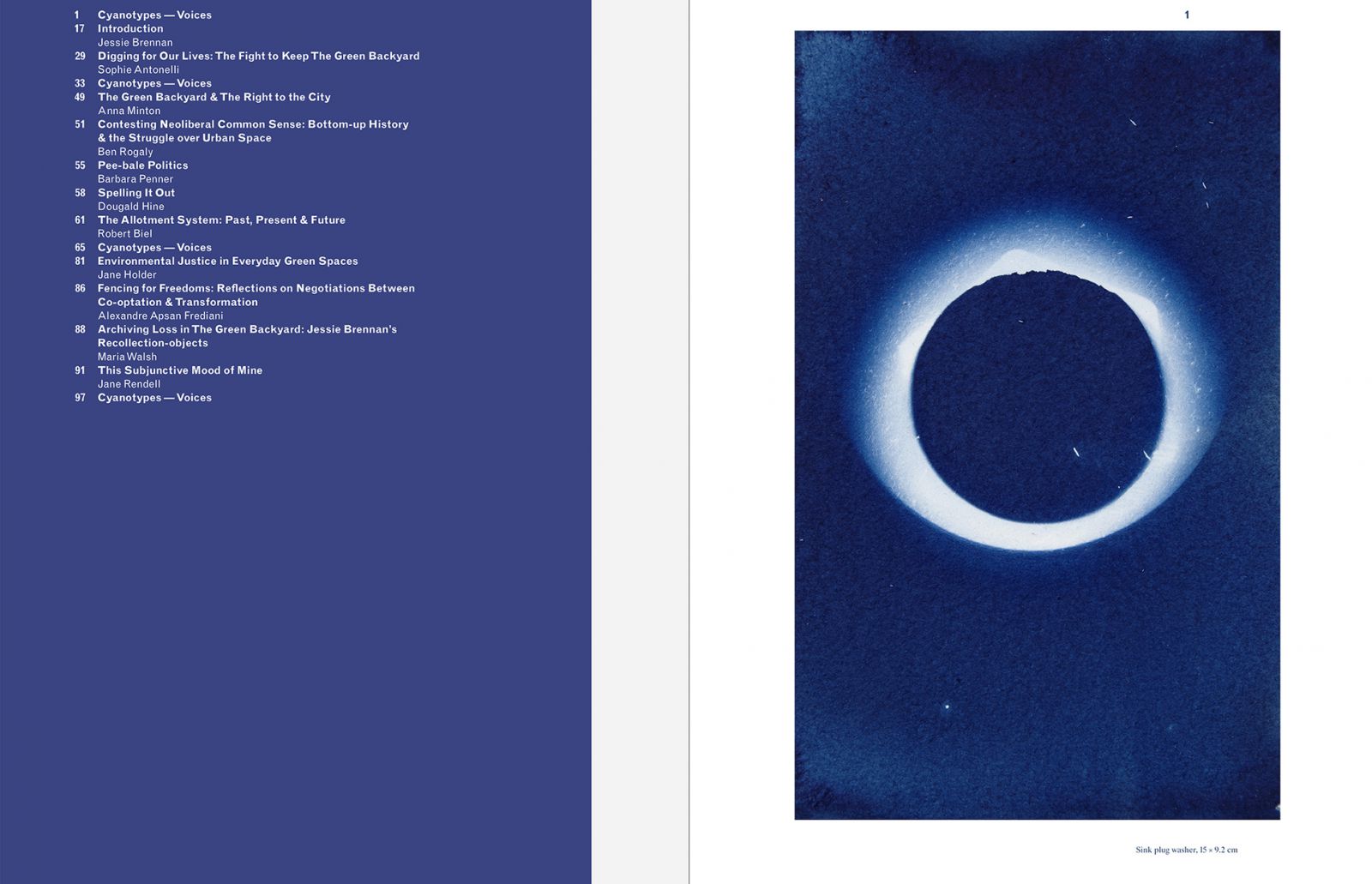 Jessie Brennan Re:development: Voices, Cyanotypes & Writings from The Green Backyard (London: Silent Grid, 2016).
Jessie Brennan Re:development: Voices, Cyanotypes & Writings from The Green Backyard (London: Silent Grid, 2016).
Precarious Migration: Voices of Undocumented Cambodian Migrants
In June 2014 the Thai military expelled all undocumented migrants from Thailand. Over the following two weeks some 200,000 Cambodian migrants fled home. This comic gives voice to the experiences of migrants caught up in that event. In the comic we share the stories of migrants and their families – the dangerous journeys that are made to reach Thailand, the working conditions, and the hopes and fears of those who stay at home looking after children and the household. We have translated the comic into Khmer and shared with villagers whose stories are told. We have also translated into Thai and shared with NGOs working for migrants rights in Thailand. All three language versions are available to download at: migratingoutofpoverty.dfid.gov.uk/publications/multimedia
Have a read of the comic produced from research transcripts talking with undocumented Cambodian migrants working in Thailand. In the Dhaba now.
Robert Nurick, Migrating out of Poverty Research Programme Consortium
2016
Uppalagarh: An Indian tribal village 30 years on
In 1986 I spent a year living with the Girasia in a remote village in the Aravalli hills in southern Rajasthan, India, as part of my doctoral research on social and gender differences between caste and tribal communities. During that time I formed close bonds with a number of women and children and when I left I did not know when I would return. I went on to write up my research as a thesis and then a book (Identity, Gender and Poverty: new perspectives on caste and tribe in Rajasthan; 1997) and subsequently went on to work on childbirth, maternal health and healing in the urban slums and villages surrounding Jaipur city.
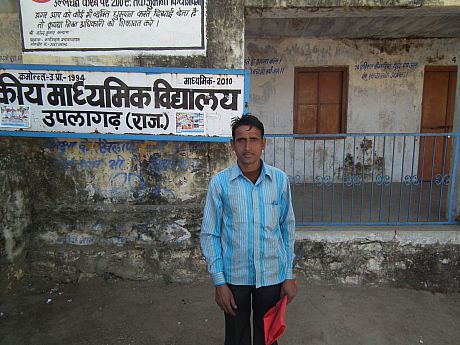 Last December (2015), I finally returned to Uppalagarh and the pictures here give some idea of the changes that I saw and the excitement I felt of reconnecting with the people I had lived with 30 years ago. I travelled with my eldest son, Arjun, two Indian colleagues and carried a set of photographs I had taken in 1986.
Last December (2015), I finally returned to Uppalagarh and the pictures here give some idea of the changes that I saw and the excitement I felt of reconnecting with the people I had lived with 30 years ago. I travelled with my eldest son, Arjun, two Indian colleagues and carried a set of photographs I had taken in 1986.
I saw young men who had been school children, a few of whom were employed as local government development workers; older women who introduced me to their grandchildren; I heard news of others whom I had been close to but had died some time ago. I saw great technological development in the form of solar lighting, irrigation and computers, yet the computers had no internet and the mobile signal could only be found on a nearby hilltop (with phones used instead to play Rajasthani folk music). Both the Girasia and their gods lived in better constructed accommodation. Minibuses and motorbikes were now used to journey to the market in place of a long walk through the jungle; government outposts had proliferated. Women were now able to get to the hospital to give birth. Yet the village appeared inaccessible and sparsely inhabited as it had in the past. The families remained close knit observing gender norms as they did in 1986 - surviving together and only partially partaking in a world so rapidly changing around them.
Maya Unnithan, Professor of Social and Medical Anthropology
Tochan Refugee Center, Mexico City
These images explore personal identity and making meaning whilst undergoing a process of transformation.
They show the day-by-day activities of Central Americans living at the refugee center ‘Tochan’ in Mexico City. Tochan, which means “Our House” in Nahuatl, offers medium-term emergency housing, as well as accompaniment and other social services for mostly Central American migrants. Tochan does not have an open door policy and receives migrants through formal agreements with partner organizations. Stay is normally limited to no more than 3 months and is usually reserved for males.
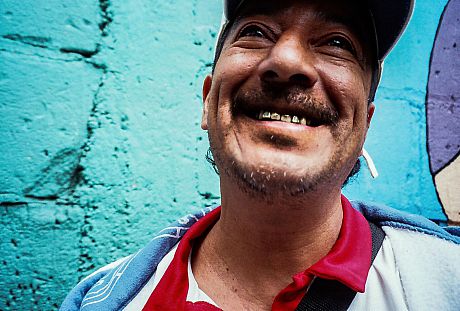 During my time volunteering there we spent afternoons playing football, hours watching Mexican cartoons and novellas, as well as plenty of time simply allowing time to pass by. Boredom was the fate of the many who were unable to find work in the city. The majority of individuals I met had left their countries, predominately El Salvador and Honduras, because of problems with gangs. Some had decided to stay in Mexico or were trying to make it to the U.S., others were unsure.
During my time volunteering there we spent afternoons playing football, hours watching Mexican cartoons and novellas, as well as plenty of time simply allowing time to pass by. Boredom was the fate of the many who were unable to find work in the city. The majority of individuals I met had left their countries, predominately El Salvador and Honduras, because of problems with gangs. Some had decided to stay in Mexico or were trying to make it to the U.S., others were unsure.
The shelter helped to create a sense of community for its residents by eating together, doing chores, cooking and cleaning, as well as taking steps forward in seeking asylum. Other factors such as humour and telling stories were also imperative for bringing ease and enjoyment to the atmosphere and helping people look at their situations with a new perspective. Religion provided a sense of hope and guidance for some, whilst supporting football teams or playing music from their home countries did the same for others.
The images were taken over the course of 6 months in 2015. The current location of those photographed is unknown.
Links
Frankie Mills
Anthropology Year 3
Yiwu: trade in a Chinese International City
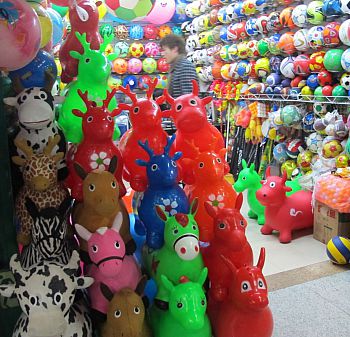 Yiwu, a city of 2 million in China’s commercially vibrant Zhejiang province, is known by traders from countries including Afghanistan and Syria, Ukraine and Mexico, and the UK and Russia as the world’s hub for the wholesale of ‘small commodities’. These commodities range from goods for pound-shops to toys, umbrellas, and shoes, and are exported to more than 200 countries across the world. Indeed, approximately 1,500 containers leave Yiwu city each day. When Yiwu markets close for the day at 16:30, traders disperse to the hundreds of hotels and restaurants in the city: there are several Syrian, Turkish, Uzbek, Afghan, Thai, Russian, and ‘Muslim’ restaurants (often Chinese Hui or Uyghur) operating in the city, which provide spaces for the international visitors to socialise, conduct business, and share information. The photographs in this exhibition show that trade is not simply a matter of buying and selling: it is also a form of sociality predicated on the mutual recognition of value and people.
Yiwu, a city of 2 million in China’s commercially vibrant Zhejiang province, is known by traders from countries including Afghanistan and Syria, Ukraine and Mexico, and the UK and Russia as the world’s hub for the wholesale of ‘small commodities’. These commodities range from goods for pound-shops to toys, umbrellas, and shoes, and are exported to more than 200 countries across the world. Indeed, approximately 1,500 containers leave Yiwu city each day. When Yiwu markets close for the day at 16:30, traders disperse to the hundreds of hotels and restaurants in the city: there are several Syrian, Turkish, Uzbek, Afghan, Thai, Russian, and ‘Muslim’ restaurants (often Chinese Hui or Uyghur) operating in the city, which provide spaces for the international visitors to socialise, conduct business, and share information. The photographs in this exhibition show that trade is not simply a matter of buying and selling: it is also a form of sociality predicated on the mutual recognition of value and people.
The photographs were taken by Diana Ibanez-Tirado in Yiwu City in 2013, when she was accompanying Magnus Marsden in his fieldwork for the project “Islam, trade and citizenship on the frontiers of Central and South Asia” funded by the Leverhulme Trust. This project centred its attention on networks of traders from Afghan background living and working in Eurasia. From 2015, Magnus Marsden became the Principal Investigator of the subsequent project ‘Yiwu: Trust, Global Traders, and Commodities’, funded by an Advanced Grant of the European Research Council. This project is expected to last five years and it will investigate diverse trading networks, diasporas, and communities present in Yiwu; the nature of capitalism and the trade systems currently found in this commercial city, and the diverse spaces, values, modes of communication, and practices underpinning cross-cultural trading relations in Yiwu and its connected outposts. The team members include: Diana Ibanez-Tirado, Filippo Osella and Marina Marouda (University of Sussex); Huaichuan Rui (Royal Holloway, University of London); Paul Anderson and Caroline Humphrey (University of Cambridge); Vera Skvirskaja (University of Copenhagen).
Further information:
2015
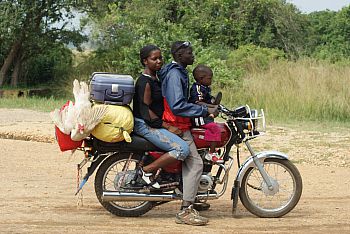 Do I Look Like I need Help?
Do I Look Like I need Help?
“These snapshots from field research mirror my everyday life in Aidland and the everyday lives of people crossing my path. They mirror the contrast in the comfort of privileged aid workers and the agency and resourcefulness of privileged and unprivileged locals.”
Dr Astrid Jamar, DFID Researcher at the University of Edinburgh (former PhD student in Development Studies, University of Sussex).
Further information:
MoVE Method:Visual:Explore
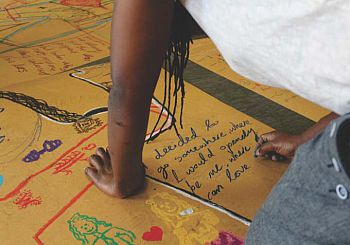 MoVE focuses on the development ofvisual and other involved methodologies to research the lived experiences of migrants in southern Africa. Our approach aims to integrate social action with research, and involves collaboration with migrant participants, existing social movements, qualified facilitators and trainers, and research students engaged in participatory research methods. This work includes the study and use of visual methods - including photography, narrative writing, participatory theatre, collage - and other arts-based approaches in the process of producing, analysing, and disseminating research data. These approaches to research facilitate story-telling and self-study, incorporating various auto ethnographic approaches. Central areas of investigation relate to issues of social justice in relation to migration, with a specific focus on sexuality, gender, health, and policy.
MoVE focuses on the development ofvisual and other involved methodologies to research the lived experiences of migrants in southern Africa. Our approach aims to integrate social action with research, and involves collaboration with migrant participants, existing social movements, qualified facilitators and trainers, and research students engaged in participatory research methods. This work includes the study and use of visual methods - including photography, narrative writing, participatory theatre, collage - and other arts-based approaches in the process of producing, analysing, and disseminating research data. These approaches to research facilitate story-telling and self-study, incorporating various auto ethnographic approaches. Central areas of investigation relate to issues of social justice in relation to migration, with a specific focus on sexuality, gender, health, and policy.
Since 2006, the African Centre for Migration & Society (ACMS) has explored the use of creative methodologies with more traditional qualitative research methods in social science research.These projects engage in the co-production of knowledge through the development of partnerships with migrant groups; a central focus is the involvement of under-represented migrant groups that face multiple vulnerabilities to collectively develop methods that ensure that their voices are heard and seen.
To date, projects have been conducted with migrant men, women and transgender persons engaged in the sex industry, informal settlement residents, inner-city migrants and hostel residents. These projects have culminated in a range of research and advocacy outputs, including community-based exhibitions, public exhibitions, engagement with officials and outreach into multi-media forums.
Further information:
"Some of our friends have a really hard time expressing themselves but with a photo it’s a big deal that they were able to tell a story"
(Krishna, a co-researcher)
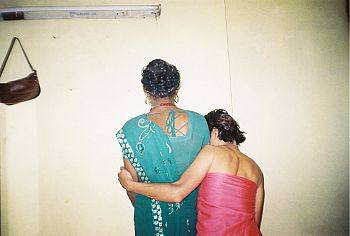 The photographs exhibited here were never intended for display. They were taken in the course of a collaborative research project aimed at exploring everyday experiences of rights, belonging, community, care and affect among people living in Kathmandu, Nepal who experience their gender and/or sexuality in non-heteronormative terms. Aimed at exploring perceptions of embodiment, space, and intimacy the photographic project was undertaken by a group of approximately thirty co-researchers, all of who took an array of images using basic point-and-shoot cameras aimed at capturing representations of their life-worlds. The photographs were employed in a research method of co-assemblage – grouped together in the course of discussion groups between the photographers with the aim of composing visual narratives concerning quotidian experiences of sexual and gender difference. The photographs were intended in these terms, as a device to open up discussion. As a means to share an aspect of the research experience, however, we are exhibiting some of the photographs while fuller representation of the work can be found at the project’s web-site: www.creative-nepal.com
The photographs exhibited here were never intended for display. They were taken in the course of a collaborative research project aimed at exploring everyday experiences of rights, belonging, community, care and affect among people living in Kathmandu, Nepal who experience their gender and/or sexuality in non-heteronormative terms. Aimed at exploring perceptions of embodiment, space, and intimacy the photographic project was undertaken by a group of approximately thirty co-researchers, all of who took an array of images using basic point-and-shoot cameras aimed at capturing representations of their life-worlds. The photographs were employed in a research method of co-assemblage – grouped together in the course of discussion groups between the photographers with the aim of composing visual narratives concerning quotidian experiences of sexual and gender difference. The photographs were intended in these terms, as a device to open up discussion. As a means to share an aspect of the research experience, however, we are exhibiting some of the photographs while fuller representation of the work can be found at the project’s web-site: www.creative-nepal.com
The project arose out of research undertaken as a part of the Institute of Development Studies’ programme on Sexuality, Poverty and Law, supported by the Department for International Development. The principal organizational collaborator in Nepal was the Blue Diamond Society (BDS), a Non-Governmental Organization supporting LGBT rights.
Since the time of the research Nepal has recently suffered two cataclysmic earthquakes, which have directly affected many of the co-researchers. Social concerns emerging out of the earthquake touch on many of the themes explored in the research project as people and communities across the country suffer from death, loss and damage. The level of devastation in Nepal is huge. Sadly some members of BDS have sadly lost their lives and many others, especially in rural areas, have lost their homes. BDS’ facilities have been damaged, impacting on ongoing livelihood programmes and care and support services for people living with HIV. Many sexual and gender minority peoples were already living in precarious circumstances, often having been excluded from the material support of kinship networks on grounds of sexual and gender difference. Stigma can preclude equal treatment in hospitals and relief services, especially for those who are visibly gender non-conforming. In the context of a greater tragedy affecting the whole country the needs of sexual and gender minority persons are often lost. And yet it is well know from experiences elsewhere that humanitarian disasters often accent social divides and in the long-term compound the vulnerability and precarity of the most socially marginal. With these concerns in mind BDS has set-up an earthquake relief fund. Any donations will make a big difference. Visit: http://www.bds.org.np/donate-us/ or make a donation at the Global Studies Office.
Paul Boyce
Marking fifty years of Anthropology at Sussex
Sussex’s Anthropology department was rated fifth in the UK for internationally recognised research in the most recent Research Assessment Exercise. It was also ranked third for student satisfaction in the 2014 National Student Survey. This display is a collection of images from researchers from the Anthropology department. The images cover research into issues such as austerity and bailouts in contemporary Greece, migration pathways, the aftermath of the genocide in Rwanda, religion and divorce in Malta, and nuclear developments and resistance in India and the department's role in the historic School of African and Asian Studies, AFRAS.
See also
2014
Adyge-Abkhaz: Exile, Diaspora, Return
Abkhaz and Adyge (Circassians) are among the autochthonous people of the Caucasus, a land famous for its ethnic and language diversity. They were deported from their homeland in the Caucasus as a result of long-lasting wars and continuing clashes with the Russian military forces. During their mass exodus in 1864 and ensuing years, the ethnically related Ubykh, Abkhaz and Adyge were deported together and settled in different parts of the Ottoman Empire. Today the majority of the Adyge-Abkhaz people live in Turkey, and also in Jordan, Israel, Syria and Europe. The Adyge and Abkhaz diaspora established first links with the Caucasus in 1970s. The last decade has been marked with increased transnationalism of the Adyge-Abkhaz and frequent interaction between the diaspora and the homeland in a variety of events. This exhibition includes some archival photos from the exile period and from the first visits to the ancestral homeland provided for my use by Abkhaz archivist Anzor Agumaa, historian Ruslan Gojba and Shamba Zerrin Kobash; and a few others who shared their family photos from the diaspora. However, majority of the images are from my PhD fieldwork that took place in 2011-2013 in a variety of diaspora settlements in Turkey as well as in Adygeya and Abkhazia.
Jade Cemre Erciyes
Pathways of Women's Empowerment and Pathways Learning Platform
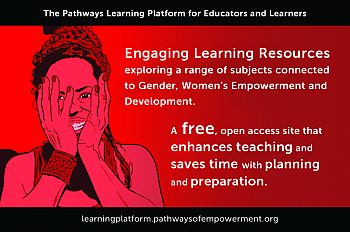 This exhibition focuses on the outputs of the Pathways of Women’s Empowerment’s programme, a global consortium of activists, practitioners and academics who uncovered a multitude of stories around the journeys of women’s empowerment. Pathways is directed by Andrea Cornwall, Head of the School of Global Studies. The exhibition also offers a glimpse into the Pathways Learning Platform, launched on International Women's Day 2014. This exciting new learning platform transforms these stories into resources which can be used for teaching from secondary school to university levels as well as in workshop and training situations. The site also speaks directly to students, who can access the learning materials independently. The Learning Platform is the result of a research dissemination project aimed to inspire and influence the next generation of policy makers, activists and academics around issues of gender equality.
This exhibition focuses on the outputs of the Pathways of Women’s Empowerment’s programme, a global consortium of activists, practitioners and academics who uncovered a multitude of stories around the journeys of women’s empowerment. Pathways is directed by Andrea Cornwall, Head of the School of Global Studies. The exhibition also offers a glimpse into the Pathways Learning Platform, launched on International Women's Day 2014. This exciting new learning platform transforms these stories into resources which can be used for teaching from secondary school to university levels as well as in workshop and training situations. The site also speaks directly to students, who can access the learning materials independently. The Learning Platform is the result of a research dissemination project aimed to inspire and influence the next generation of policy makers, activists and academics around issues of gender equality.
See also: the Pathways Learning Platform
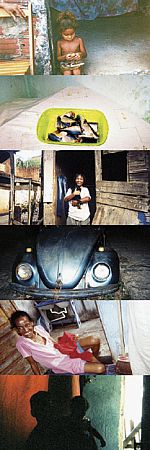 Revealed Cities
Revealed Cities
Revealed Cities captures glimpses of the day-to-day lives of twelve domestic workers in Salvador, Bahia, Brazil. Their images show transitional places, interstices between the contexts of their work and home lives that portray the changing landscapes of Salvador as an urban space. The exhibition grew out of a participatory research project focused on understanding the history, strategies and dynamics of the Brazilian domestic workers’ movement conducted by the Nucleus for Interdisciplinary Studies on Women (NEIM) of the Federal University of Bahia, as part of the Pathways of Women's Empowerment research consortium. The project used a range of research strategies, including training of a group of domestic workers as photographers. Through a series of workshops, initially using disposable cameras, these women came to find in photography a powerful new language with which to explore their situations and for creative self-expression. Revealed Cities was launched in a prestigious Salvador art gallery, revealing to the gallery-visiting public the otherwise invisible lives of the women who clean their homes.
Andrea Cornwall
Quotes
Ana Cristina, age 28
“The photo has given me a broader view of things and encouraged me in the writing of my poetry. It is a composition that shows the day-to-day life. Sometimes we take photo of a place and when we come back the next day is no longer the same. The photo brings me a thrill”.
Ana Flávia, age 24
“The photography has contributed a lot in my ability to stop and look. Before the course, I lived without paying to much attention to details. Today, I stop, look and analyse a bit more”
More quotes
2013
Everyday Life in Communist Albania
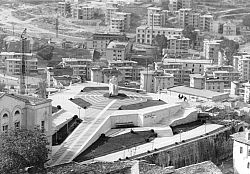 Everyday life in communist Albania is a multi-method and multi-sited research project carried out by Prof. Russell King (PI) and Dr Julie Vullnetari (RF), and funded by the Leverhulme Trust. This display is based on photographs taken during fieldwork or extracted from archives, as part of the three-year investigation. The research project seeks to understand communist/socialist society through the lens of everyday life, using Albania as a case study. It is built around answering one simple, broad question: What was everyday life really like under the regime of Enver Hoxha in Albania? The setting of Albania is unique given that during its phase of ‘actually existing socialism’ (cf. Verdery 1996) the country’s government followed a very orthodox Stalinist path of development, which swung to the other extreme of free-for-all capitalism after the regime’s demise in the early 1990s.
Everyday life in communist Albania is a multi-method and multi-sited research project carried out by Prof. Russell King (PI) and Dr Julie Vullnetari (RF), and funded by the Leverhulme Trust. This display is based on photographs taken during fieldwork or extracted from archives, as part of the three-year investigation. The research project seeks to understand communist/socialist society through the lens of everyday life, using Albania as a case study. It is built around answering one simple, broad question: What was everyday life really like under the regime of Enver Hoxha in Albania? The setting of Albania is unique given that during its phase of ‘actually existing socialism’ (cf. Verdery 1996) the country’s government followed a very orthodox Stalinist path of development, which swung to the other extreme of free-for-all capitalism after the regime’s demise in the early 1990s.
Russell King and Julie Vullnetari
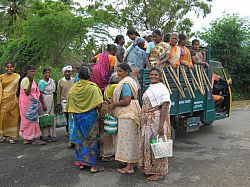 Field research
Field research
This exhibition portrays the work of two members of Global Studies faculty as they undertake research to explore the implementation and impacts of the Mahatma Gandhi National Rural Employment Guarantee Act (MGNREGA), an unprecedented state employment guarantee scheme that aims to benefit millions of rural households across India.
Grace Carswell and Geert De Neve
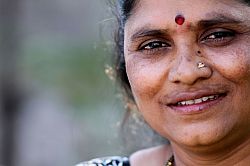 VAMP
VAMP
Stills from a film, Save us from Saviours, that tells the story of an Indian sex worker collective, VAMP, whose mission is to change society so as to end the stigma, violence and exclusion experienced by sex workers.
Andrea Cornwall
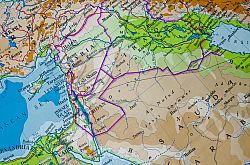 Wall Maps
Wall Maps
The display of wall maps from the University of Sussex Map Library provided a snapshot of a mid-20th century world as represented by European and North American educational cartographers.
Evelyn Dodds & Alan Lester
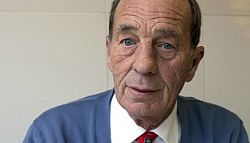 Places for All
Places for All
Places for All is a multi-media investigation in an English city. This display of work by photographer Liz Hingley is part of a research project based in Peterborough led by Sussex geographer Ben Rogaly. It explores the multiple and diverse place attachments and work and migration histories of people of all ethnic backgrounds, from people born in the city to those who arrived very recently.
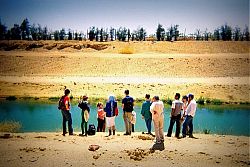 Egypt
Egypt
Photographs taken on a Geography field class in 2012 by Geography student Zara Sumpton
2012
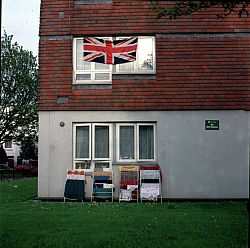 Moving on?
Moving on?
Images investigating social mobility and social class in an inner London locality.
Migration PhD student Debbie Humphry
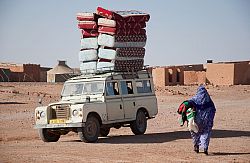 Western Sahara
Western Sahara
Photographic display. International Development student Nina Taugbol
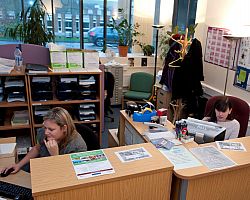 Global Studies in a Day
Global Studies in a Day
Images taken on 1/12/11 by and about the School to celebrate the University’s 50th anniversary
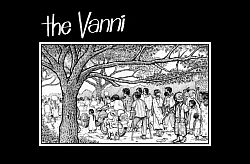 The Vanni
The Vanni
A multimedia graphic novel on the recent conflict in Sri Lanka. Anthropology PhD student Benjamin Dix
2011
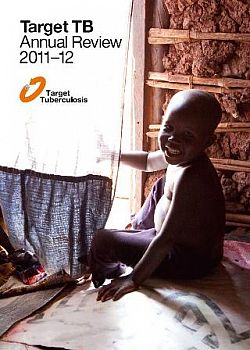
Target TB
Target TB aims to stop vulnerable people in Africa and Asia dying from TB by improving access to information, treatment and care and support. The UK office is in Brighton and Anthropologist Maya Unnithan is a trustee.
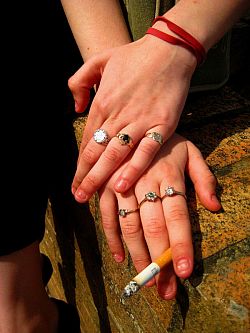 Life on a Hand
Life on a Hand
This exhibition consisted of images of jewellery describing narratives embedded in ideas of class, culture, taste and beauty. Anthropology PhD student Barbara Holler.
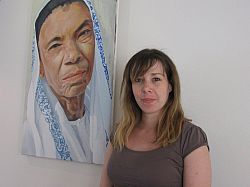 Paintings
Paintings
Iris Sanchez
2010
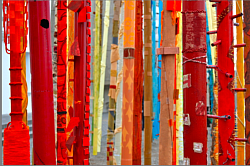
Global Studies around the world
Opening display showcasing the diverse nature of the School and its activities



